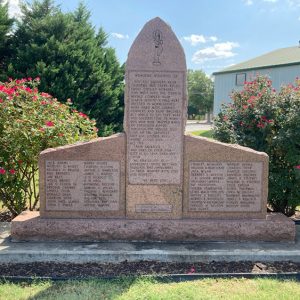Entry Category: Events
aka: Skirmish at Talbert's Ferry
Taylor, Zachary (Leadership of Fort Smith)
Taylor’s Creek and Mount Vernon, Skirmishes at
aka: Skirmish at Crowley's Ridge
Tenth Arkansas Infantry/Tenth Arkansas Cavalry (CS)
Terre Noire Creek, Skirmish at
aka: Skirmish at Antoine
aka: Skirmish at Wolf Creek
Thirty-Eighth Arkansas Infantry (CS)
Thirty-First Arkansas Infantry (CS)
Thruston, Henry Clay
 Titan II Memorial
Titan II Memorial
Titan II Missile Accident (1965)
Titan II Missile Explosion (1980)
 Troop Train
Troop Train
Troop Train No. 571 Wreck of 1918
aka: Garland Troop Train Accident of 1918
Tulip, Skirmish at
Twelfth Arkansas Infantry (CS)
Twenty-Seventh Arkansas Infantry (CS)
 UCV Reunion Parade
UCV Reunion Parade
Union Occupation of Arkansas
Union Transport near St. Charles, Attack on
aka: Attack on U.S. Transport Marmora (October 22, 1864)
United Confederate Veterans Reunion of 1911
United Confederate Veterans Reunion of 1928
United Confederate Veterans Reunion of 1949
USS Queen City, Sinking of
Van Buren and Fort Smith, Reconnaissance to
Van Buren, Capture of
Van Buren, Skirmish at (April 2, 1865)
Van Buren, Skirmish at (August 12, 1864)
 Veterans Day Parade
Veterans Day Parade
Vine Prairie, Skirmish at
Waddell’s Farm (near Village Creek), Skirmish at
Waldron to Baker’s Springs, Scout from
Waldron to Mount Ida, Caddo Gap and Dallas, Scout from
Waldron War
Waldron, Attacks on
Wallace’s Ferry, Action at
aka: Action at Big Creek
War of 1812
Washington and Benton County Expedition
Waugh’s Farm, Skirmish at
 West Point Memorial
West Point Memorial




